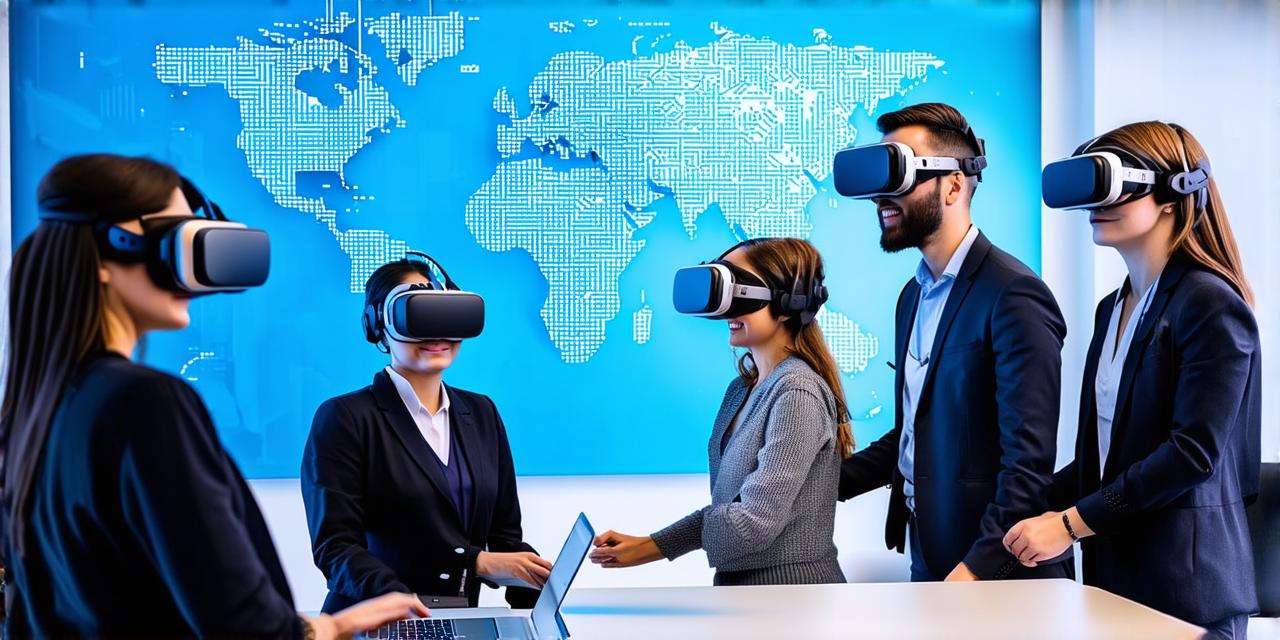Increased Accessibility
Virtual reality is an excellent tool for making the workplace more accessible to everyone. For example, VR can be used to create virtual simulations of work environments that allow employees with disabilities to practice tasks in a safe and controlled environment. This can help them develop new skills and gain confidence in their abilities before they take on real-life tasks.
In addition, VR can also help remote workers feel more connected to their colleagues and the company culture. By using virtual reality tools like video conferencing and collaborative software, remote workers can participate in meetings and brainstorming sessions as if they were in the same room. This can help reduce feelings of isolation and loneliness that often come with working remotely.
Improved Training and Development
Virtual reality is an excellent tool for training employees in a safe and controlled environment. For example, VR simulations can be used to train employees on how to handle dangerous situations like emergency response or hazardous materials handling. This can help reduce the risk of injury or death in the workplace and improve overall safety.
In addition, VR can also be used for more mundane tasks like customer service training. By creating virtual simulations of customer interactions, employees can practice responding to different scenarios and improve their communication skills. This can lead to better customer satisfaction and increased productivity.
Enhanced Collaboration and Communication
Virtual reality can also help teams collaborate more effectively by providing a shared virtual space where they can work together in real-time. For example, architects and engineers can use VR tools to visualize and test designs before they’re built, which can save time and money in the long run.
Similarly, sales teams can use VR simulations to practice their pitches and presentations, which can help them feel more confident when dealing with customers in real-life situations. This can lead to better relationships with customers and increased sales.
Increased Productivity and Efficiency
Virtual reality can also improve productivity and efficiency by allowing employees to work more efficiently and effectively. For example, VR simulations can be used to train employees on complex machinery or software, which can help them become more proficient in their tasks.
In addition, VR can also be used for virtual meetings, which can save time and money by reducing the need for travel. This can lead to increased productivity and efficiency, as well as a better work-life balance for employees.
Case Studies and Personal Experiences
One of the most compelling reasons to use virtual reality in the workplace is the positive impact it has had on companies that have already adopted it. For example, General Motors used VR simulations to train employees on how to operate new machinery, which led to a 50% reduction in training time and a 75% increase in productivity.
Another company, Oculus, used VR tools to improve their customer support training program. By creating virtual simulations of customer interactions, employees were able to practice responding to different scenarios and improve their communication skills. This led to a 40% reduction in customer complaints and a 30% increase in customer satisfaction.
Personal experiences with virtual reality can also be compelling. For example, one employee who used VR for customer service training reported feeling more confident and prepared when dealing with customers in real-life situations. Another employee who used VR simulations to practice driving a new vehicle reported that the training was much more effective than traditional methods.
Research and Experiments
There is also a growing body of research that supports the use of virtual reality in the workplace. For example, a study by Stanford University found that employees who used VR simulations for training were more likely to retain information and apply it in real-life situations than those who did not use VR.
